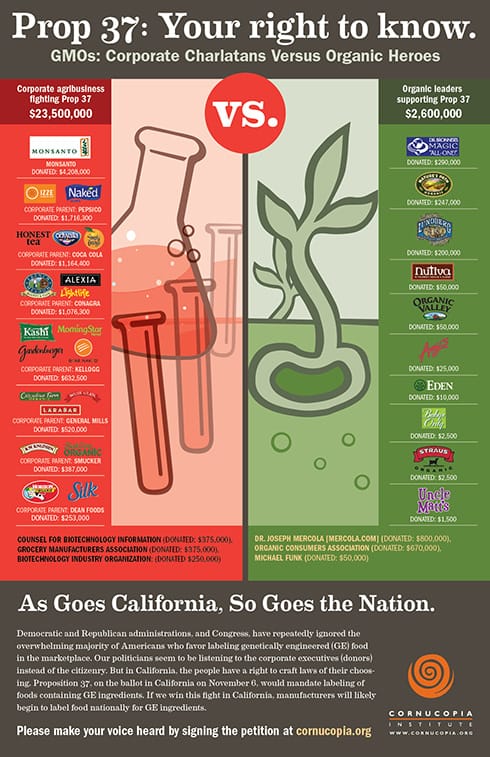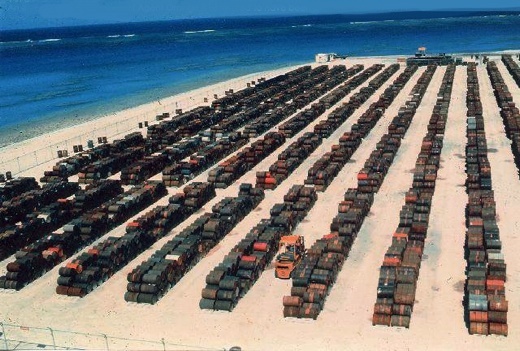Hi Eaters!
There's a huge buzz nationally about our food supply....and most of the story, when it comes to the big suppliers, is looking grim for eaters....like you and me. In the 2012 Farm bill, GMO corporation, Monsanto is pushing for exemptions on Clean Air, Clean Water and environmental law, in addition to a huge push to get hundreds more untested, unregulated GMO crops fast-tracked to the fields.
Thank heavens for those of us who understand and revere the crucial importance of protecting our food supply; that food is our medicine, and our medicine, our food...CSA's (community supported agriculture), Community and School Gardens, Farm-to-School initiatives, Farmers Markets and Edible Lawns are the growing rage around the nation. This is brilliant and wonderful!
But there is a gigantic push with over $25 MILLION from "The BIG 6," Giant Agri-Biz and Grocery Store Chains to fight California Proposition 37 The RIGHT TO KNOW IF IT'S GMO (genetically modified organism) LABELING INITIATIVE, to keep us all in the dark about what is really in the bags, bottles, boxes and cans that riddle our grocery shelves today. (see accompanying PDF to see the shocking list of which Food Providers wnat us to know and which have spent a ton to keep us from knowing what is and is not GMO in or foods)
A groundbreaking new documentary film about genetically modified/genetically engineered (GMO or GE) food has just been released that is a must see!
Please have a look at this trailer...it is a new documentary film on
GMO's - GENETIC ROULETTE, by JEFFREY SMITH, that I helped
do research on over the last few months. This may be one of the most
important films on our food supply that, we hope, will compel the passage
of the CALIFORNIA PROPOSITION 37 RIGHT TO KNOW - GMO LABELING
INITIATIVE, up for vote in November's National Elections. Passage
means ALL GMO INGREDIENTS MUST BE LABELED FOR ANY FOOD
SOLD IN CALIFORNIA (THE WAY 40 OTHER NATIONS ALREADY DO).
Watch the trailer Order the film
Visit the movie website: GeneticRouletteMovie.com
Please watch and order for your local libraries, schools, gifts, and any
other way you can think of to get this message to anyone and everyone
you know who eats food. As goes California, So Goes The Nation!
Posted on August 18, 2012 at 2:12 pm
http://cleanfoodearth.blogspot.com
http://southampton.patch.com/users/kathleen-furey/blog_posts
Hey, We've All Gotta Eat!
There's a huge buzz nationally about our food supply....and most of the story, when it comes to the big suppliers, is looking grim for eaters....like you and me. In the 2012 Farm bill, GMO corporation, Monsanto is pushing for exemptions on Clean Air, Clean Water and environmental law, in addition to a huge push to get hundreds more untested, unregulated GMO crops fast-tracked to the fields.
Thank heavens for those of us who understand and revere the crucial importance of protecting our food supply; that food is our medicine, and our medicine, our food...CSA's (community supported agriculture), Community and School Gardens, Farm-to-School initiatives, Farmers Markets and Edible Lawns are the growing rage around the nation. This is brilliant and wonderful!
But there is a gigantic push with over $25 MILLION from "The BIG 6," Giant Agri-Biz and Grocery Store Chains to fight California Proposition 37 The RIGHT TO KNOW IF IT'S GMO (genetically modified organism) LABELING INITIATIVE, to keep us all in the dark about what is really in the bags, bottles, boxes and cans that riddle our grocery shelves today. (see accompanying PDF to see the shocking list of which Food Providers wnat us to know and which have spent a ton to keep us from knowing what is and is not GMO in or foods)
A groundbreaking new documentary film about genetically modified/genetically engineered (GMO or GE) food has just been released that is a must see!
Please have a look at this trailer...it is a new documentary film on
GMO's - GENETIC ROULETTE, by JEFFREY SMITH, that I helped
do research on over the last few months. This may be one of the most
important films on our food supply that, we hope, will compel the passage
of the CALIFORNIA PROPOSITION 37 RIGHT TO KNOW - GMO LABELING
INITIATIVE, up for vote in November's National Elections. Passage
means ALL GMO INGREDIENTS MUST BE LABELED FOR ANY FOOD
SOLD IN CALIFORNIA (THE WAY 40 OTHER NATIONS ALREADY DO).
- If we pass Prop 37 Right To Know in California, do you think they
will have different food labels for the rest of the nation? - If they pass this in California, do you think people will buy GMO-labeled
foods or foods FREE of GMO ingredients? - Do you agree with 90% of our nation's eaters that we have the RIGHT
TO
KNOW IF what we eat IS GMO?
Watch the trailer Order the film
Visit the movie website: GeneticRouletteMovie.com
Please watch and order for your local libraries, schools, gifts, and any
other way you can think of to get this message to anyone and everyone
you know who eats food. As goes California, So Goes The Nation!
Posted on August 18, 2012 at 2:12 pm
http://cleanfoodearth.blogspot.com
http://southampton.patch.com/users/kathleen-furey/blog_posts
Hey, We've All Gotta Eat!









